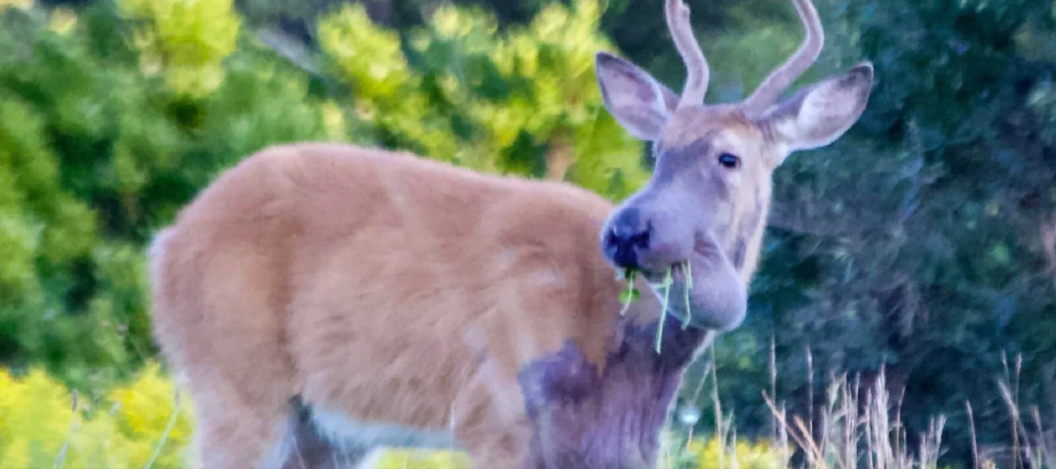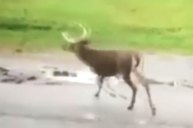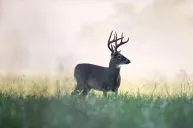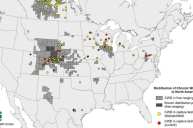A bizarre, half-purple, cartoonish deer in Maine has wildlife biologists scratching their heads.
The unique young buck first appeared on their radar August 31, when Maine wildlife photographer Tony Gedaro snapped some photos as he was passing through Cape Elizabeth. He then posted those pictures in a Maine wildlife page on Facebook searching for answers as to what was wrong with the young buck, who was sporting a swollen nose, large growths, and purple discoloration on the front side of his body.
The images and question was met with a variety of theories, including that the deer had been hit by a vehicle, that it was a birth deformity, and that the curious-looking cervid was a cross between a whitetail and moose.
Gedaro sent the photos to the Maine Department of Inland Fisheries and Wildlife. The experts there suggested that the deer was showing signs of illness, specifically Bullwinkle condition, a relatively new and rare ailment popping up in wild deer.
"This is going to fall into the 'we can't know for sure without doing an exam and collecting samples' category," Gedaro posted on Facebook. "The suggestion that came up most commonly ... was some sort of seroma, which would be an accumulation of fluid associated most often with trauma or infection. Also suggested were an unusual manifestation of 'Bullwinkle' condition, severe bottle jaw, a large abscess, hypoproteinemia, or fluid accumulation associated with conjunctive heart failure."
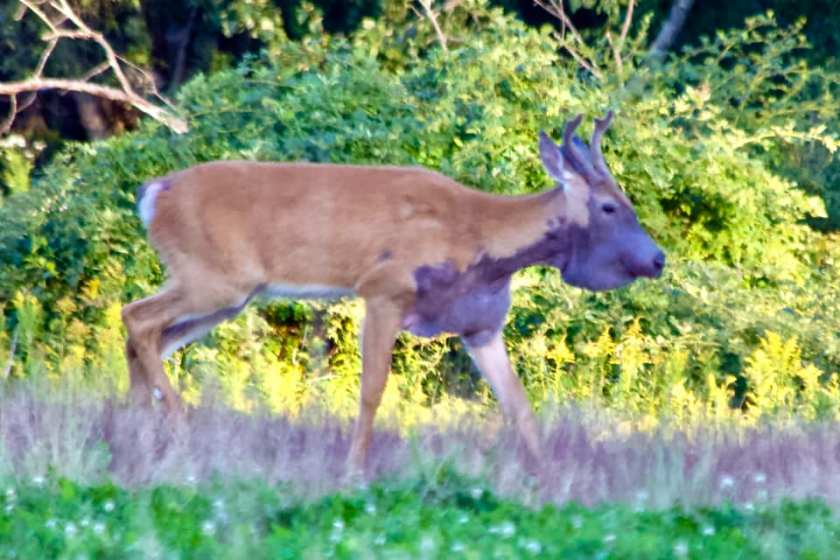
Photo Courtesy of Tony Gedaro/Facebook
The state has seen similar cases but no two cases are exactly alike, said Nathan Bieber, the deer biologist for the Maine Department of Inland Fisheries and Wildlife. Without sending samples to a lab, it's impossible to confirm which ailment this deer is suffering from.
What Is Bullwinkle Condition?
Bullwinkle condition is believed to be caused by the bacteria Mannheimia granulomatis, according to the National Deer Association. The bacteria isn't new; it's been a confirmed cause a skin disease in cattle in Argentina for decades. But cases of it affecting deer are rare. The first time Bullwinkle disease associated with deer showed up in scientific records was 2002.
The telltale sign of the unusual condition is marked swelling of the soft tissue of the muzzle, which the Miane deer clearly has.
Dr. Kevin Keel, formerly of the Southeastern Cooperative Wildlife Disease Study (SCWDS) at the University of Georgia and now at the University of California-Davis, was the lead investigator on the study that identified the bacterial cause of the Bullwinkle condition.
Keel and colleagues investigated the heads of 27 deer that showed signs of the same infection. The only similarity between every single deer was clusters of the bacteria M. granulomatis at the core of the inflamed tissue.
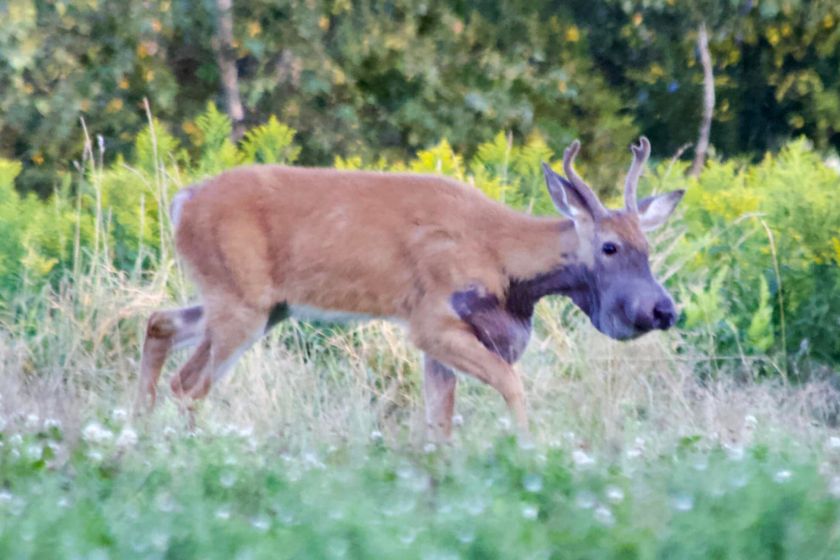
Photo Courtesy of Tony Gerardo/Facebook
"It does look like it has the Bullwinkle condition," said National Deer Association director of conservation Matt Ross. That's a bacterial infection," Ross says. "It's an interesting, relatively new ailment that's been found in deer in the last 10 to 15 years. It's shown up more frequently lately, in about a dozen states. It doesn't seem to be environment-related."
Although Bullwinkle condition is not an immediate death sentence, Ross believes this deer's days are numbered.
"It looks like the deer is eating in some pictures, but it is obviously not in good shape," Ross said. "What's going on with its nasal passage and jaw is probably making it very difficult for the deer to eat. Its immune system is compromised, so I don't think this deer is going to live a long life."
READ MORE: Werewolf-Looking Mangey Black Bear Spotted in Missouri
